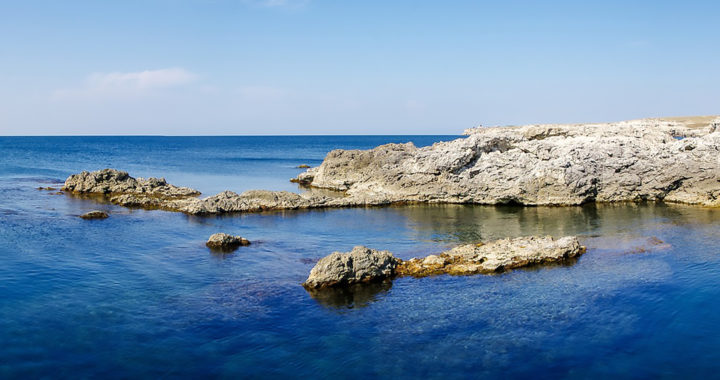Russia invaded and annexed Crimea in February and further in March of 2014. This event was part of the ongoing Russia-Ukraine conflict, as well as an aftermath of the Revolution of Dignity in which the majority of Ukrainians and the parliament removed then Ukrainian and pro-Russian president Viktor Yanukovych from office.
But why did Russia invade and annex Crimea? What are its motivations? What was the role of the Russia-Ukraine conflict? To understand the reason behind the resolve of the Russian government, it is also important to understand part of the history of Crimea, as well as its relationship with both Ukraine and Russia.
Explainer: Understanding the Reason Russia Invaded and Annexed Crimea
Background of Its Russian and Ukrainian Ties
The peninsula of Crimea became part of the Russian Empire after the annexation of the Crimean Khanate in 1783. Following the collapse of the empire, the territory fell under the Russian Soviet Federative Socialist Republic until 1954.
Note that a series of short-lived independent Crimean governments emerged during the Russian Civil War, which spanned from 1917 to 1923. But the Crimean Autonomous Soviet Socialist Republic was later established, and it became part of the Russian Soviet.
The status of the Crimean Soviet as an autonomous entity was downgraded to that of an oblast or a federal subject of Russia in 1946. In 1954, the Crimean Oblast was transferred from the Russian Soviet to the Ukrainian Soviet Socialist Republic.
A 1954 decree of the Presidium of the Supreme Soviet of the Soviet Union approved the transfer as part of commemorating the union of Ukraine with Russia and the further strengthening of the relationship across the United Socialist Soviet Republic.
There were attempts to restore the autonomy of Crimea in 1990. The Crimean Autonomous Soviet Socialist was reestablished, and with the eventual collapse of the Soviet Union in 1991, it became a recognized autonomous entity that was part of the independent Ukraine republic.
Tension Between Russian Federation and Ukraine
Remember that Ukraine restored the autonomous status of Crimea in 1991 following its independence from the Soviet Union and its reestablishment as a democratic and sovereign state independent from Soviet laws and Russia.
The autonomous status of Crimea was reaffirmed with the ratification of the Constitution of Ukraine in 1996. The constitution designated Crimea as the “Autonomous Republic of Crimea,” but also maintained that it is an “inseparable constituent part of Ukraine.”
However, the status of Crimea as an autonomous Ukrainian entity resulted in tension between Russia and Ukraine. Russia has argued that it has a historical claim over the Crimean territory and its inhabitants that can be traced backed to the Russian Empire.
It is important to highlight the fact that there is a sizable number of pro-Russian individuals in the Crimean territory. After all, demographically, the population is composed primarily of ethnic Russians albeit with significant Ukrainian and Crimean Tatar minorities.
Furthermore, note that the Black Sea Fleet of the Russian Federation has a base in the Crimean peninsula. Fears of further escalation of tension between Russian and Ukrainian governments, as well as armed skirmishes, were occasionally raised.
Russia-Ukraine Conflict and the Russian Annexation of Crimea
The Russia-Ukraine conflict of 2014 emerged primarily due to the internal sociopolitical unrest in Ukraine. To be specific, the majority of Ukrainians launched a series of protests starting in 2013 when its then-president abruptly an agreement with the European Union.
President Yanukovych rejected a deal for the greater integration of Ukraine with E.U. to favor closer ties with the Russian Federation and to support the Eurasian Economic Union. This move sparked massive public criticism which resulted in his ouster in February 2014.
Yanukovych is a pro-Russian Ukrainian politician. There is also a pro-Russian population in Ukraine. The series of events leading to the removal of Yanukovych resulted in armed unrest in the eastern portion of Ukraine beginning February 2014.
Russia saw the situation in Ukraine as an opportunity to invade and annex Crimea once and for all. Masked Russian troops without insignia took over the Super Council of Crimea on 27 February 2014 and occupied other strategic sites across the peninsula.
A status referendum was held on 16 March 2014 in the Autonomous Republic of Crimea and the local government of Sevastopol. The referendum essentially asked the people if they wanted to join the Russian Federation as a federal subject or remain part of Ukraine.
Note that 97 percent of the Crimean population voted for the integration of the region into the Russian Federation. The voter turnout was 83 percent. Following the results, the Crimean Supreme Council declared independence from Ukraine.
Summary: The Reason Why Russia Invaded and Annexed Crimea
Based on the aforementioned discussion of events above, why exactly did Russia invade and annex Crimea? The answer to this question is straightforward. There are two reasons. Russia has a historical claim over the Crimea territory and its inhabitants.
The second reason is that majority of the Crimean population seems to prefer being part of the Russian Federation than the Ukrainian government, the Russian invasion and annexation met little to zero resistance from the Crimean population.
However, the result of the referendum is not internationally recognized by most countries. The United Nations Security Council made a resolution declaring the referendum invalid due to the presence of Russians. Third members of the council voted in its favor.
The Crimean peninsula also has a geostrategic significance. A Russian presence and control of the region would mean establishing further its economic and military presence in the entire Black Sea. Note that the peninsula can provide Russia with strategic defense capabilities.

